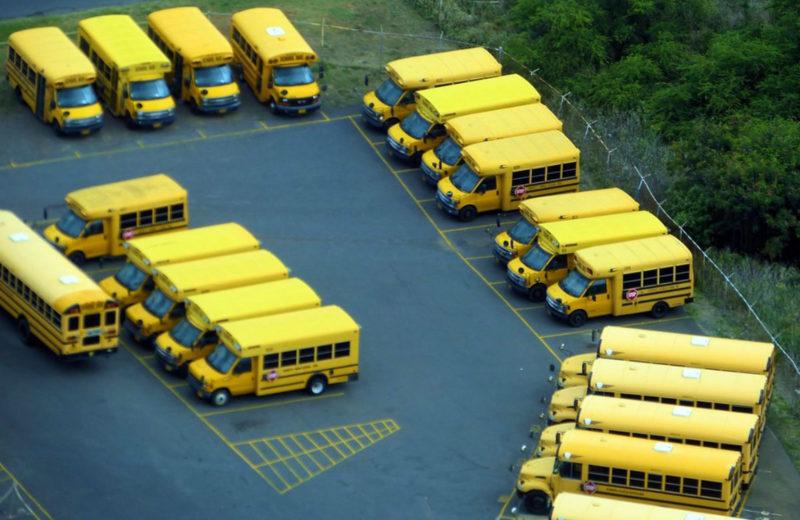Mandatory Busing Shows That Government Can’t Fix Complex Problems

In late June, the Democratic primary candidates squared off in their first debate. The crowded two-night affair underscored the conflict between candidates wanting to return to the type of big-ticket top-down policies favored by the party in and before the 1970s and those more reflective of the party’s mainstream in recent decades.
One might assume the conversation after the two nights would focus around single-payer health care or the Green New Deal, but, spurred by a sharp exchange between Kamala Harris and Joe Biden, the hot topic was mandatory busing of students to combat school segregation. Suddenly promising to bring back this policy from the 1970s was a political box to be checked by the candidates, and failure to support it decades ago became a liability.
AIER Senior Research Fellow Phil Magness wrote last month about the history of southern school segregation and effects of the busing policy. No matter one’s political stripes, calling this anything near a successful policy would be difficult. This policy, intended to right the wrongs of segregation, created a further legacy of weakened neighborhoods and resentment from all sides.
Is this a failure of imagination on the part of the Democratic candidates? While the problem of school segregation has evolved over decades, their deeply flawed “solution” remains the same. But the failure lies in what voters, the media, and politicians themselves expect of presidents and other national leaders. The candidates on stage were answering the question “What blanket rule will you impose on a national level to address a deeply complex issue?” And there is no good answer to that question.
Explicit Segregation
To understand the severe mismatch between federally mandated busing and schools still divided along ethnic lines, it’s important to distinguish between two types of school segregation. I’ll call the first type explicit segregation, a hallmark of the southern United States in the first half of the 20th century. Such policies simply created separate schools for white and black students. The obvious problem was that “separate but equal” was generally a lie — racist local and state school officials simply invested more in white schools and neglected black ones.
That practice became ostensibly illegal after the 1954 Supreme Court decision Brown v. Board of Education. Local administrators could not explicitly divide students along racial lines. But correcting bad outcomes is rarely as simple as targeting a handful of bad actors.
Southern school administrators did not want to see integrated schools, and they got creative. In the almost two decades after Brown, Magness explains, they exploited issues like individual student performance and the de facto segregated neighborhoods where citizens lived to continue to keep white and black students apart.
Following another court decision in 1971, the federal government took a brute-force approach: randomly select students from majority-white and majority-black schools and bus them across town to the other school. One can surely find both positive stories and nightmare scenarios among the generation that faced mandatory busing. But one cannot deny that such a policy tore at the cohesion of neighborhoods, was disruptive to families, and bred even more resentment on all sides in the already-poisoned well of the post–civil rights South.
Over the course of decades mandatory busing policies were slowly rolled back, to the point that as an elementary school student in the 1980s I never knew such a thing existed. It was a highly costly policy enacted to combat willful action intended to harm African Americans in the South. Historians can and should debate its efficacy. But we must view the renewed debate through a modern lens.
Emergent Segregation
The fact remains that many schools today remain mostly white, and others mostly black or brown. But to view today’s phenomenon, which I’ll call emergent segregation, as the same dragon to slay as that from the 1970s sabotages the effort from the start.
Prior to 1954, the primary reason schools were segregated is that those in charge chose to make them that way. For a time after 1954, they were segregated because the same people manipulated other rules to keep them that way. The scars of America’s history with race remain in the South as well as other regions of the country, as do people who wish they could continue to segregate schools explicitly, from the top down. But today school segregation emerges primarily from the bottom up, from decisions made by millions of families that have nothing to do with the resulting racial makeup of schools.
When families decide what city, town, or neighborhood in which to live, they take countless factors into account, including jobs, proximity of friends and neighbors, constraints such as income, and countless other factors that could never even be quantified. Whether or not people specifically wish to live primarily among those with their ethnic makeup, this result often emerges and is reflected in local schools.
Emergent segregation remains a pernicious issue for at least two reasons. First, unequal treatment across schools remains even if fewer people explicitly seek that result in a calculated manner. Once again, such biases can be reflexive decisions made without intent and the sum total of many factors across society. Painful legacies are difficult to wipe out, and denying they exist in the 21st century is as unrealistic as asserting that the situation remains the same as in 1971.
The second reason is perhaps talked about less, but its importance cannot be understated. Like so many other factors today, when people are only around others of their ethnic background, it’s more likely they will misunderstand, resent, or be uncomfortable with others. If kids of different backgrounds were able to mix in a way that felt voluntary, it’s possible that nobody would have to write this article again in another 50 years.
The Wrong Questions
Mandatory busing changes the equation entirely, mixing students by random lottery without concern for individual circumstances. Far from understanding and comradery, how could such measures breed anything but resentment from all sides? At the same time, lower-income minority neighborhoods need to build the type of social capital that one only finds in those living around them.
Mandatory busing is a direct attack on neighborhoods both black and white, but as is so often the case the poorer and often minority neighborhoods have the most to lose. Further destroying those neighborhoods’ cohesion will only perpetuate the host of factors leading to emergent segregation in the first place. In 2019, it is hard to argue that these highly intrusive means are justified by the ends of forcing a dwindling number of nefarious school administrators to invest equally in schools.
Busing as put forth by the Democratic candidates is not a bad answer. Rather, it’s the only answer to a terrible question emblematic of today’s political landscape. When we assume that a problem so complex, involving millions of decisions hardly related to school, must be tackled with a “plan” from the president, what is there to do but draw some names out of a hat and move some kids around?
I don’t mean to exonerate these candidates — they keep our thinking on this and other issues trapped by advertising, even believing, that they as president can work such miracles. Republicans are guilty as well — the current president based his campaign on his unique ability to personally lead the nation to greatness.
The real answers are less viscerally appealing because they are far more complicated. While real solutions won’t fit on a campaign website, and in fact must be allowed to evolve over time, a couple of simple principles can sketch out an approach that on a common sense level seems vastly superior to busing.
If the problem is white state or city administrators not treating mostly black schools as well as they treat mostly white ones, give local families in neighborhoods more control over their schools. Do away with blanket rules and let people get involved to create the wonderful schools to which they’re entitled. They might make mistakes, but they can look to other schools that didn’t for guidance on what to change.
Strengthening schools and neighborhoods alleviates the problem of bad treatment by administrators but leaves schools ethnically homogenous. But at this point, schools and neighborhoods strengthened internally can and should build bridges to each other. Schools can offer different classes and let kids travel, and create joint sports teams and after-school programs. Now white and black students mix because they want to.
The busing issue is a perfect example of our need to escape the fallacy that only nation-states offer good and lasting solutions to social problems. In many cases it’s just the opposite. In a field of over 20 candidates from both parties, the fact that nobody makes such a point bodes poorly for schools and many other issues.












